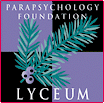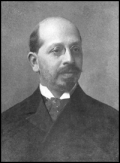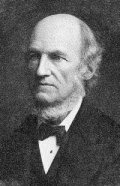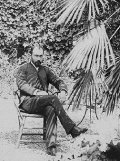 |
 |

While psychic phenomena were not completely neglected by many nineteenth-century students of the mind, many of them did not think the phenomena required explanations other than those conventional ones such as deception and subconscious phenomena such as automatisms. The work of psychologist Joseph Jastrow is an example of this. (See one of his articles by clicking here.) (The photograph at the left above is Joseph Jastrow.)  Others, such as physicians William Carpenter and William Hammond explained everything through the workings of the nervous system. French psychiatrist Pierre Janet believed many psychic phenomena were explained by the conventional but still misunderstood workings of the subconscious mind. (The gentleman to the right is William Carpenter.) Others, such as physicians William Carpenter and William Hammond explained everything through the workings of the nervous system. French psychiatrist Pierre Janet believed many psychic phenomena were explained by the conventional but still misunderstood workings of the subconscious mind. (The gentleman to the right is William Carpenter.)
In an important classic, L’automatisme psychologique (1889), Janet discussed many manifestations of dissociation, such as amnesia and double personality, phenomena he considered to be pathological.  One of the phenomena he included to illustrate the varieties of dissociation was mediumship and motor automatisms However, Janet did not consider the possibility that the trance speaking and talking of mediums could include information beyond the sensory range of the mediums, as believed by some psychical researchers. (The photograph to the left is Pierre Janet in 1889.) One of the phenomena he included to illustrate the varieties of dissociation was mediumship and motor automatisms However, Janet did not consider the possibility that the trance speaking and talking of mediums could include information beyond the sensory range of the mediums, as believed by some psychical researchers. (The photograph to the left is Pierre Janet in 1889.)
The psychical researchers, whose work became organized with the founding of the London based Society for Psychical Research (SPR) in 1882, were interested in these ideas as well. However, they also explored the possibility that the explanation offered by Carpenter, Jastrow, Janet and others were not enough. In other words, among other issues, they wanted to empirically study the possibility that telepathy could involve the actual transmission of images, emotions or ideas without the use of sensory or inferential modes of knowledge, as well as the possibility that mental mediums could deliver veridical or truthful messages from seemingly deceased individuals without the operation of such normal channels of information. Some of the best known pioneers of the SPR included Frederic W. H. Myers and Edmund Gurney. Their work, and that of others, included experiments in thought-transference, spontaneous telepathy, apparitions of the dead, and mental mediumship. Myers’s Human Personality and Its Survival of Bodily Death (1903) summarizes his important ideas about the subliminal mind, as well as the nineteenth-century work of the SPR. Janet, P. (1889). L’automatisme psychologique: Essai de psychologie expérimentale sur les formes inférieures de l’activité humaine [Psychological automatism: An essay of experimental psychology about the inferior forms of human activity]. Paris: Félix Alcan. Myers, F. W. H. (1903). Human personality and its survival of bodily death (2 vols.). London: Longmans, Green. |
 |

|
 www. parapsychology. org |
||